Using some of that “stuff “in the sewing room
“Imagination is everything. It is the preview of life’s coming attractions.”
― Albert Einstein
While doing the New year tidy up in my sewing , creating, playing work room over Christmas, I was prompted to wonder why I had collected up so many small stretched canvases and where was I going to store them ?????? , you know that feeling ?????. What can I make with them as a project to share ?. The reason I had sourced so many of them was for a brilliant idea in the past that wasn’t quite as brilliant as I thought, time to move them on. Before I give them away I thought I would have a little play with a couple of possibilities to share with you. Some new projects to mess up my newly tidied work room and yours.
Ps had a fantastic Christmas break full of good stuff and 2017 is looking pretty exciting, I truly hope your year is full of good creative “stuff”.
Materials
Old city door image inspiration to work from. This image of the door must have the ability to have windows to cut out.
Silk organza or sheer fabric.
Rayon machine embroidery threads.
little pieces of interesting fabrics for texture and embellishment
Little padlock and keys.
Closed toe, free motion embroidery foot no 29c
Small portrait size canvas , pre stretched, the size is dependent on your door image but no smaller than 15cm x 20 cm
PVA Glue or equivalent.
Craft glue.
Fusible web.
Watercolour paper or Khadi cotton rag paper.
Fimo light optional.
Hand threads.
Chord for hanging.
Hanging timber, the length dependent on size of canvas .
Embellishments such as keys and padlocks.
Small piece of water soluble fabric.
Rayon embroidery threads.
To start with visit good old google and do some image research for your door design, when you have the one you love print it out on normal computer paper. I use sourced images but resize and play with the colours etc in some basic apps or I draw them from the original altered when stitched. AS this is someone else’s photograph I suggest you alter it by colour extra design etc , use the image as inspiration .If you are confident and have the time draw your own inspiration.Make sure you print out size is proportional to the canvas. My door size does not fill the canvas
After you have printed the image trim to size and using a layer of fusible web attach the paper image to a calico backing to give it strength when sewing.To do this peel a piece of fusible web of the backing and sandwich web only between calico and image. Fuse using a hot dry iron and baking paper to protect the iron and the image print.
Using the same method as above fuse a layer of organza to the the image of the door. I have cut the organza a little larger than the canvas, this gives it a fabric look and a lovely surface to paint and stitch it softens the image and strengthens the paper for stitch. To do this peel a piece of fusible web of the backing and sandwich between organza and image.Fuse using a hot dry iron and baking paper to protect the iron and the organza.
Free motion embroider the organza covered image, highlighting areas and adding textures and colours with interesting fabrics and papers .Colour in with fabric pens special details etc
Stitch around the outside of the images window frames.
Cut out your 2 windows form your stitched design
Lay the image with cut out windows on the top surface of the stretched canvas and mark the window size then cut .
Turn the canvas upside down and stitch from the back. Before you stitch place the windows of the door stitched design to match the canvas cut out areas and then stitch around the edge of the windows.This holds the layers together and the windows tight to the canvas.
Think of the canvas frame as a embroidery hoop as you move it under the needle . You need to carefully slide the canvas a stitched design under the needle and foot for the free motion embroidery foot
Cut a piece of water soluble fabric just a little larger than the cut out windows and free motion embroider from the back of the canvas, stitch the inside window cut out area, be sure all your stitches connect and that they catch the cut edge of the window stitching.
Now that you have completed the stitching you will need to dissolve the water soluble carefully using warm water on a sponge. To do this I placed the canvas upside down on a old towel and carefully sponged the window stitching with warm water .
Glue the body of the door i.e. the stitched calico image to the canvas using craft glue. At the back of the canvas frame I stretched some gold foil from timber to timber of the canvas frame which sets it back from the window and adds depth giving the appearance that there is a light on inside. I have also decorated with printed deli paper and old writing printed of the computer.This is attached to the canvas with layers of PVA glue.I use found objects such as a padlock to tell more of the story.I have hand stitched around the organza edging.
Using screw eyes I prepare the art work for hanging, I have screwed in 2 screw eyes into the top of the wooden frame and 3 to the bottom of the canvas frame.
From the bottom 3 I am going to dangle some bling.This is optional and open to any interpretation.
I have previously made some “fimo light” tiles with a mould . I pressed the fimo light with a fine mesh fabric on the surface into a small tile mould and after it was dried I used a copper buff to pick up the raised areas.
I have hand stitched these little tiles onto some hand made cotton rag paper but you could use a heavy weight watercolour paper. The tiles can also be carefully machine stitched, nice and slowly if you prefer machine to hand stitch.
The bottom half of the hanging bling paper is stitched with a computerised sewing pattern and then rubbed over with a copper metallic rub and hung swinging to the screw eyes with chord stitched to the top of the hand made paper.
I then hang keys on the paper by hand stitching.
You have now finished and I hope that this is just a possibility that you can grow and own as yours.
Creating a window into a festive garden from your pre stretched small canvas.
Materials
Small stretched canvas the size of mine was 25 cm sq.
Fusible web.
Gesso paint or similar.
small piece of calico or such.
Floral fabric.
Green foliage fabric.
Threads and texture fibres.
Silk or such for flowers heads.
Yarns for flower heads.
Water soluble fabric.
Glue.
Iron
Baking paper .
Small amounts of different textured fabrics for leaves and flower heads.
Free motion foot no 29c.
Rayon machine embroidery threads.
Standard embroidery patterns for leafs 113 and 137, for curtain 644 optional can be free motion stitched
To Start
Using a pencil mark the back of your stretched canvas with window cross bars design to form 4 small panes .
Free motion these marked lines with straight stitch.
To stitch turn the canvas upside down and carefully slip under the needle.I don’t use a machine foot to stitch the window frame this is because I am stitching close to the canvas stretcher frame edge and I dont want to catch the edge of the stretcher frame with my needle . This allows me more control over the stitches and where they are going, I use the frame of the canvas as I would a embroidery hoop.
When you have stitched the panes ( you can see the amount of stitching I have used in the image 2 down) cut the panes out).
After the panes have been cut out of the stretched canvas I paint it all with some gesso to give the canvas strength definition and texture.
The garden vista.
Fuse your floral design fabric and green fabric on a piece of calico. To do this first cut the calico fabric a little larger than the the back of the window but to fit with in there outside edge of the canvas frame. Fuse your floral and foliage fabric to the calico. To fuse the fabrics cut a piece of fusible web that is sized to the calico peel of the backing of the fusible web and lay the web only on top of the calico, position your floral and foliage fabric on the calico and then fuse with a dry hot iron covering the surface with baking paper to protect iron and fabric. Cut a backing of wadding to fit the size of your garden calico.
To create a texture on the green foliage fabric I have used scraps and snips of fabric and thread finely cut .To do this I snip these fibres finely on to the top of a layer of peeled fusible web that covers the foliage fabric.Use a dry hot iron to melt the fusible and fibres make sure you cover the fibres with baking paper to protect both surfaces . This texture creates the energy and textures of a busy garden.
Adding a final layer of texture to represent the stems of the plants.Use yarn, ribbon, chord etc by laying these ingredients on top of a fresh layer of fusible web which is covering the finely snipped texture.Fuse this with a dry hot iron and baking paper.
Set your sewing machine up for free motion stitching and use foot 29c free motion .Free motion stitch over the foliage texture using straight and patterned stitches.The patterned stitches I used were 113 and 137
Cutting and adding leaves out of different textured fabrics.Stitch your leaves through the foliage and flower heads area.
Circles for the flower heads, these can be stitched as circles or folded to make interesting 3d flowers.
Lace curtain
Measure your water soluble fabric a little larger than the window frame so as you can cut and gather it to your favored position on the window.
The water soluble fabric should be doubled to stitch. I have used a computerised patterned stitch no 644 in a grid and then small circles around the grid to make sure all stitches are connected .
Wash out your water soluble fabric to reveal the lace curtain.
Ta Da !
You are finished and remember this is just a possibility you can take it in any direction you like.
Please visit my website to see more art work and my teaching for 2017 -2018
And my FB for al current updates
https://www.facebook.com/Chelle.Textiles/
Theses are my two most recent comissions
 BERNINA Corporate Blog -
BERNINA Corporate Blog -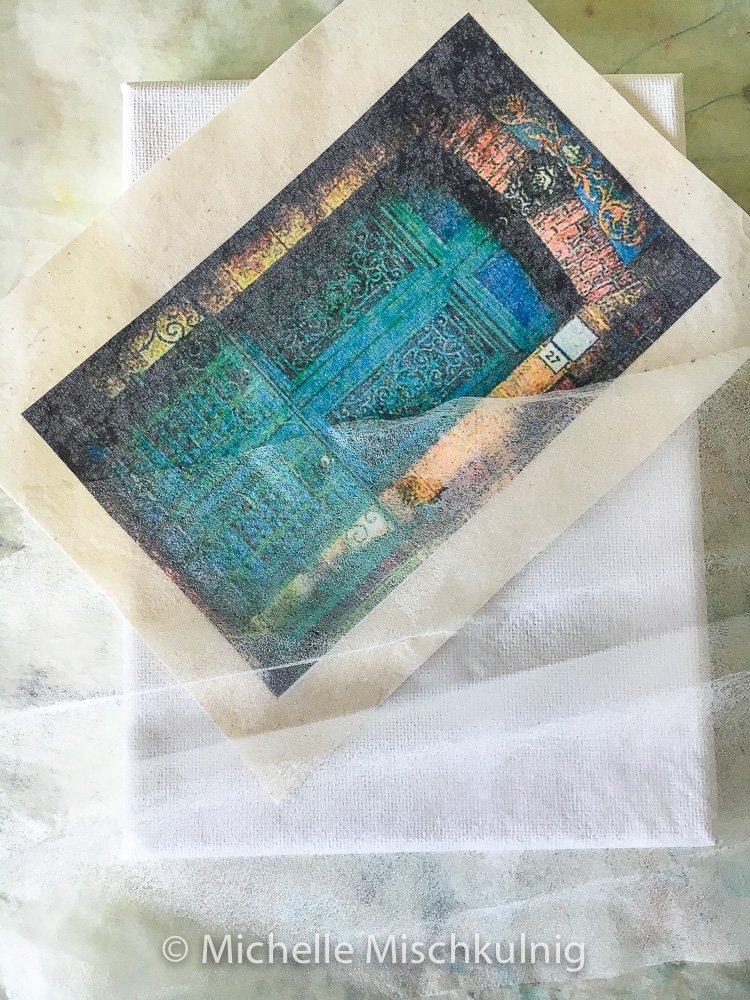
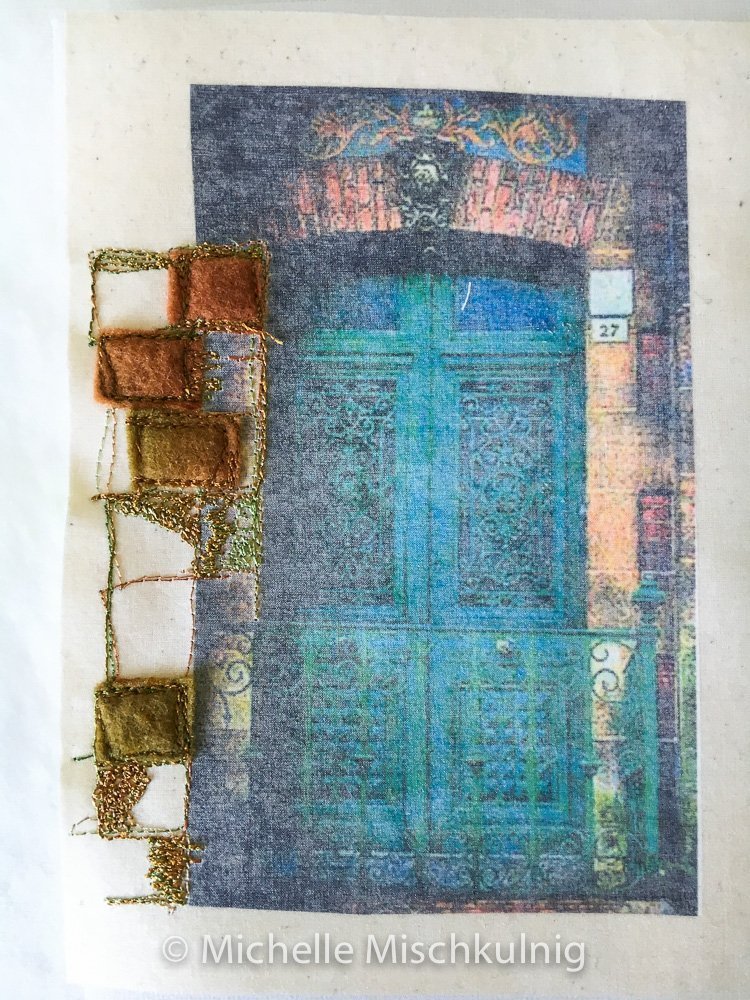







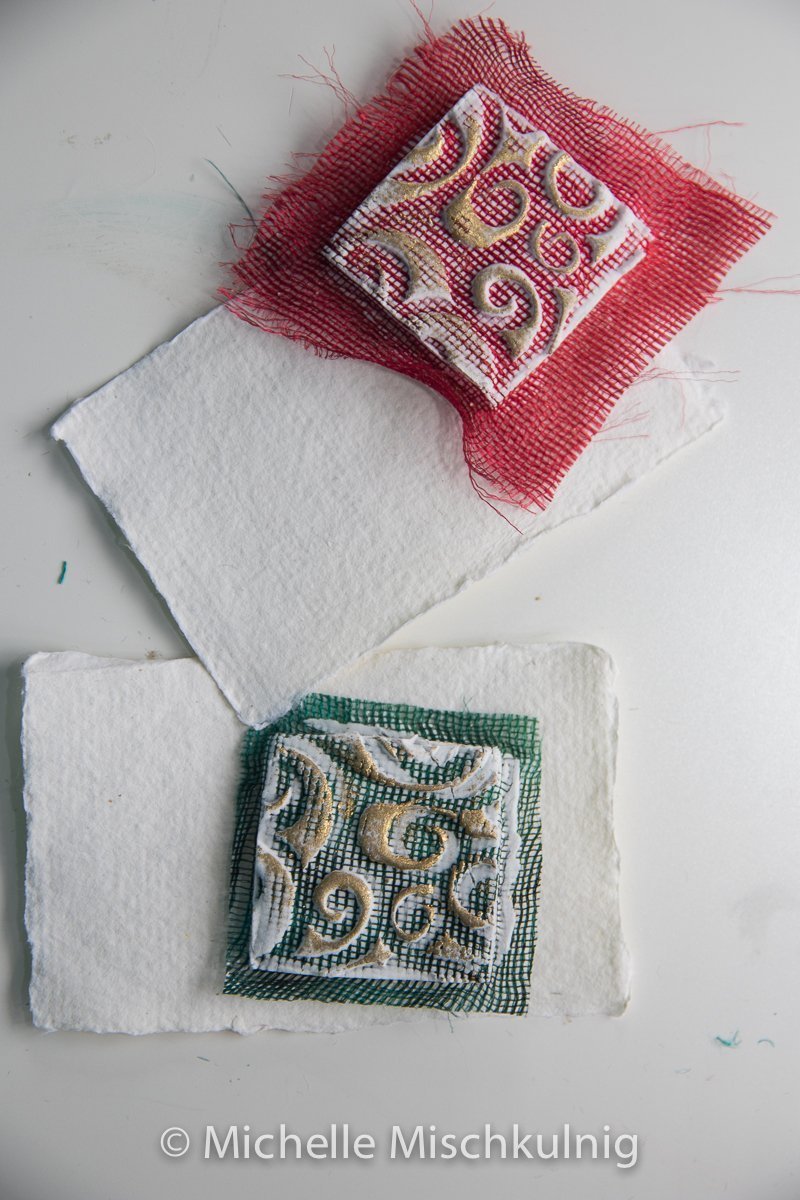
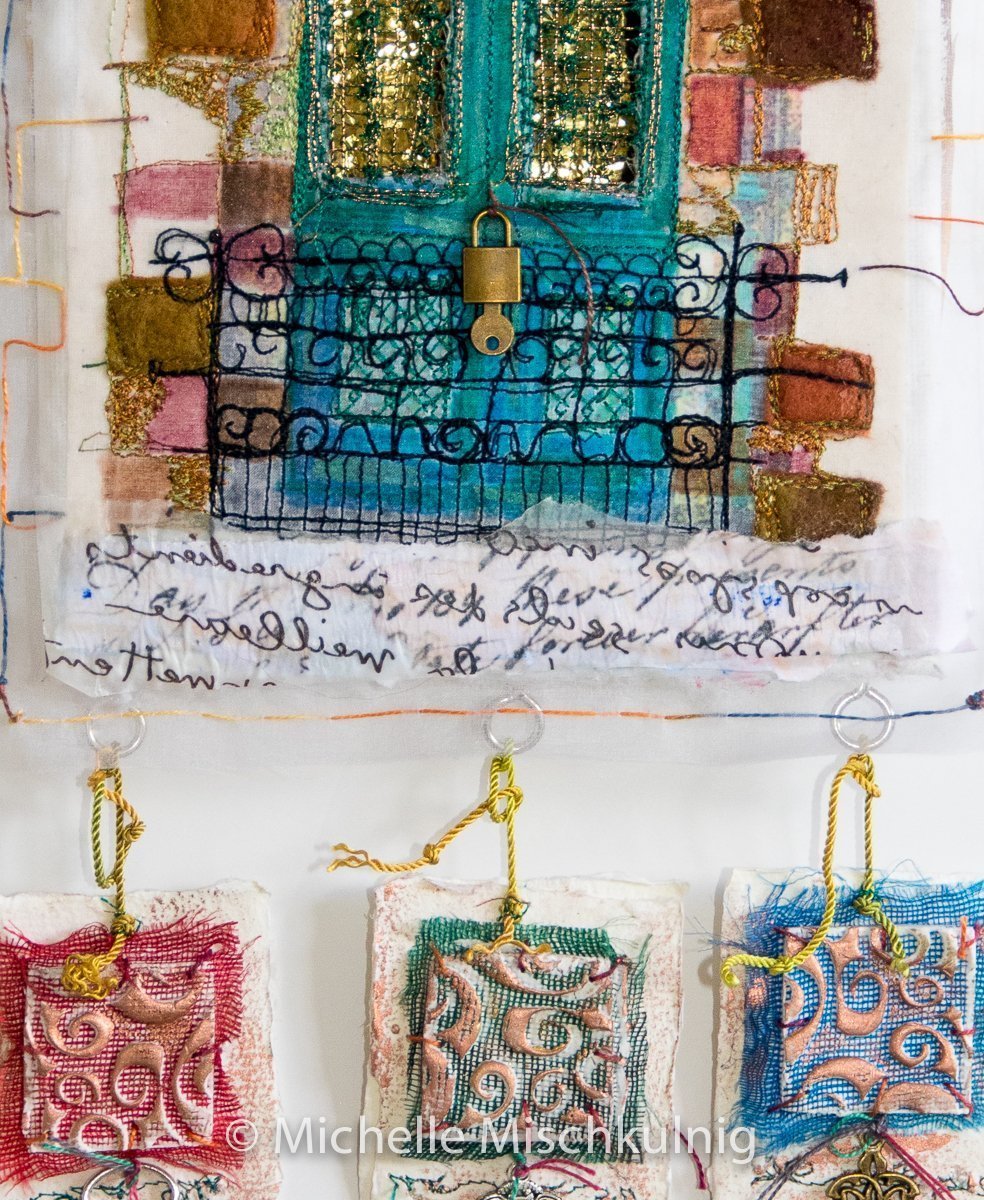















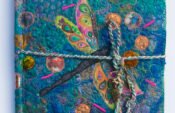



Looks great!